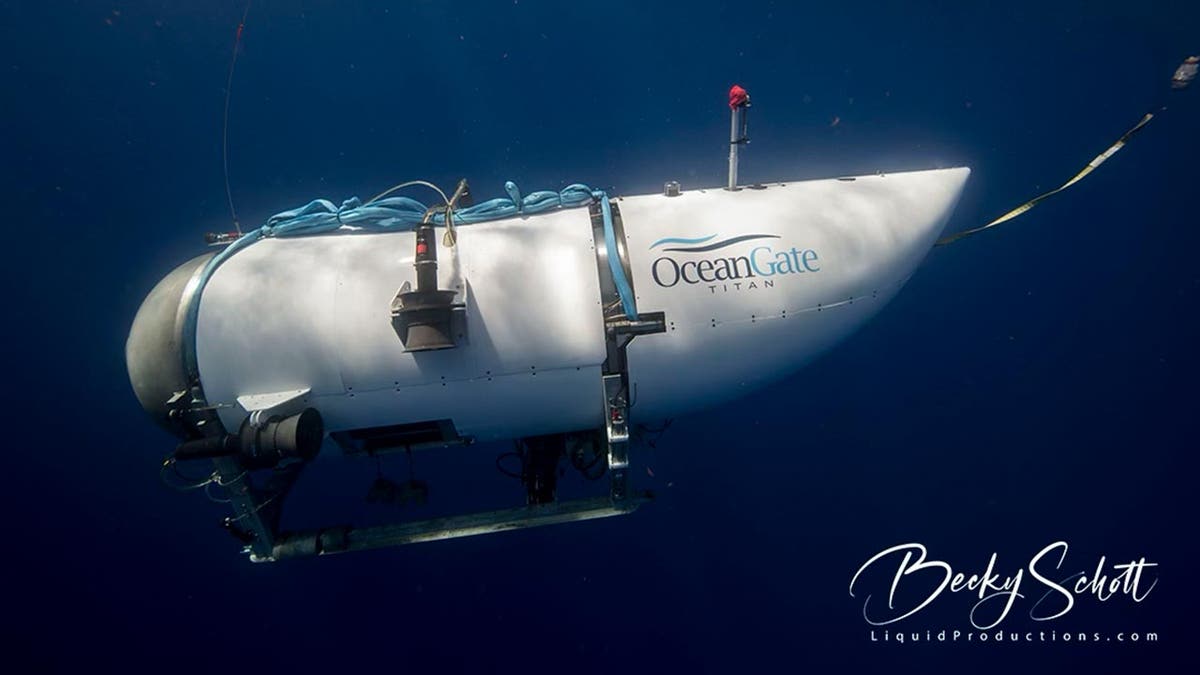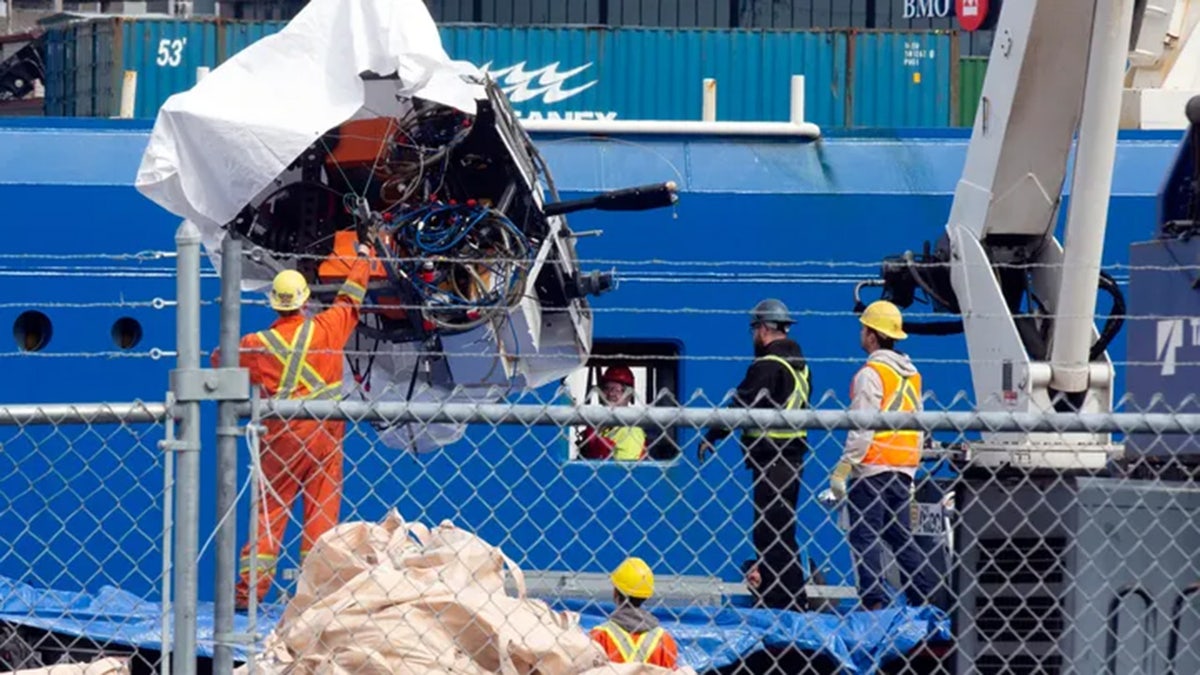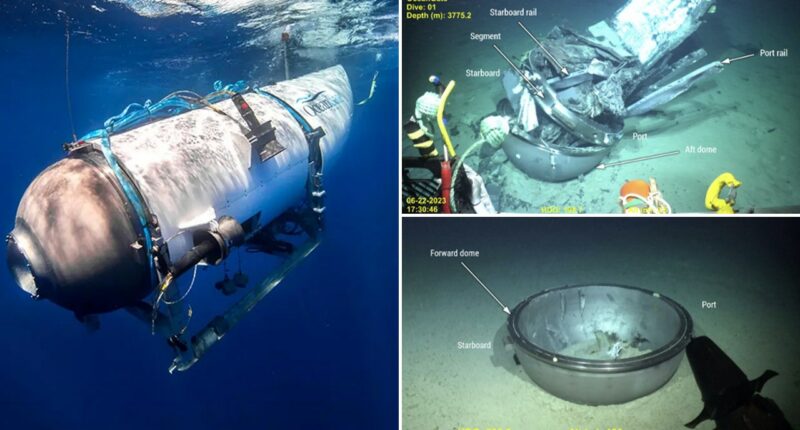Share this @internewscast.com
A damning new investigation into the Titan submersible tragedy, which claimed the lives of five individuals, has revealed that the vessel suffered damage during previous dives and was constructed using a flawed engineering approach that did not adhere to safety standards. These issues ultimately led to the catastrophic implosion.
Released by the National Transportation Safety Board (NTSB) on Wednesday, the report highlights that OceanGate, the company operating the submersible, failed to properly test Titan or ascertain its true strength and resilience.
The tragic implosion occurred in 2023 near the Titanic wreck site in the North Atlantic Ocean, resulting in the immediate loss of all five people aboard.
Diverging from earlier investigations, the NTSB report delves into the physical failure of Titan’s carbon-fiber hull and introduces new technical safety recommendations.

In a 2018 photograph, the Titan submersible is seen in the Bahamas. The vessel tragically imploded during a mission to explore the Titanic on June 19, 2023. (Photo by Becky Kagan Schott)
“Our investigation determined that the Titan’s pressure vessel likely sustained damage after surfacing from dive 80, manifesting as one or more delaminations,” the report explains. Simply put, delamination involves the separation of material layers within the carbon fiber hull, compromising its integrity.
Those delaminations deteriorated between dive 80 and dive 88, its final dive, resulting in a local buckling failure that led to the implosion. In fact, it found that after dive 82, the Titan sustained additional damage of unknown origin that further deteriorated and weakened the pressure vessel.
The new report stated that OceanGate’s real-time monitoring data analysis of Titan’s pressure was flawed, so the company was unaware that the vessel was damaged and needed to be immediately removed from service. The sensors meant to detect hull strain didn’t trigger proper alarms and engineers misread or dismissed the data, the report found.
The vessel’s flawed engineering and carbon fiber design were outlined as the primary cause for its ultimate demise.
“We determined that the probable cause of the hull failure and implosion… was OceanGate’s inadequate engineering process, which failed to establish the actual strength and durability of the Titan pressure vessel and resulted in the company operating a carbon fiber composite vessel that sustained delamination damage… resulting in a damaged internal structure that subsequently led to a local buckling failure of the pressure vessel,” the report states.

A labeled image from the NTSB report shows the wreckage of OceanGate’s Titan submersible on the ocean floor, including its aft dome and rail sections, during recovery operations on June 22, 2023. (NTSB)
The report also said the wreckage of the Titan likely would have been found sooner had OceanGate followed standard guidance for emergency response, and that would have saved “time and resources even though a rescue was not possible in this case.”
The NTSB report follows on from a 335-page report by the U.S. Coast Guard (USCG) released in August which found that the tragedy was preventable and also the result of a flawed experimental design and ignored safety warnings.
That report blamed OceanGate, with particular culpability placed on OceanGate CEO Stockton Rush, who perished in the disaster. It also focused on OceanGate’s culture, leadership, certification gaps and suppression of safety warnings.
The new NTSB adds new, sharper specifics that the Coast Guard report didn’t spell out, like how the Titan’s carbon-fiber pressure hull physically failed.
For instance, the Coast Guard only noted that earlier dives showed “cracking sounds” and “signs of fatigue,” but didn’t tie them to a numbered dive sequence or a confirmed delamination chain.

Debris from the Titan submersible, recovered from the ocean floor near the wreck of the Titanic, is unloaded from the ship Horizon Arctic at the Canadian Coast Guard pier on June 28, 2023. (Paul Daly/The Canadian Press via AP)
The NTSB report called for a Coast Guard-led panel of deep-submersible experts to study current pressure-vessel operations and share their findings with industry, alongside new U.S. regulations for pressure vessels for human occupancy.
It also recommends that the Coast Guard implement regulations for the vehicles that are informed by that study. The report states that current regulations for small passenger vessels “enabled OceanGate’s operation of the Titan in an unsafe manner.”
The report also called on the Coast Guard to “disseminate findings of the study to the industry,” which has grown in recent years as privately-financed exploration has grown.














